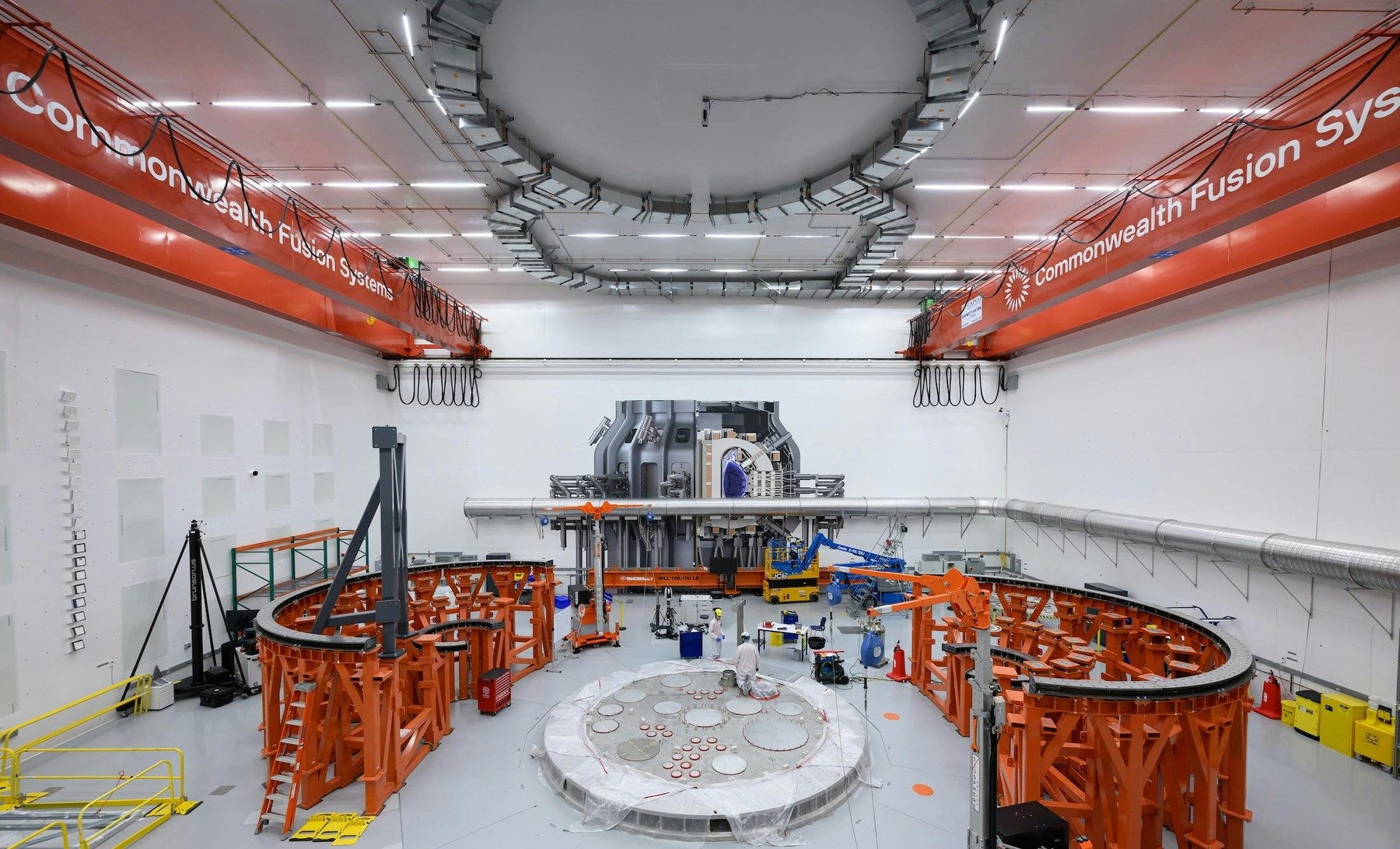Welcome to Climate Tech Pulse, your daily dose of market intelligence helping fuel the fight against climate change. From groundbreaking investments to cutting-edge research, we’re bringing you the latest in climate tech that’s shaping our future.
Don’t miss out on tomorrow’s climate solutions – subscribe now to stay ahead of the curve! https://lnkd.in/dwr7B9XJ
Today’s newsletter:

🔝Today’s Top Story: BMW Group has announced plans to launch its first series production hydrogen-powered fuel cell electric vehicle (FCEV) in 2028.
📊 Today’s Data Point: SME Climate Ambition Drive: Targeting 10,000 SMEs for Emission Reductions by COP29.
🌳 Climate Insider Intelligence: Report Reveals U.S., Norway, and Canada Leading in Taxpayer Spending on ‘False Climate Solutions.
BMW and Toyota Unveil Bold 2028 Plan for First-Ever Hydrogen Fuel Cell Vehicle Launch
BMW’s Hydrogen-Powered Future
BMW Group has announced plans to launch its first series production hydrogen-powered fuel cell electric vehicle (FCEV) in 2028. This decision follows the successful testing of the iX5 Hydrogen pilot fleet, introduced as a concept vehicle in 2019. The company sees hydrogen-powered FCEVs as a complement to its growing lineup of battery electric vehicles (BEVs), with a goal of reducing CO2 emissions per vehicle by 40% across the entire lifecycle by 2030. Half of BMW’s global sales are targeted to be EVs by 2030.
BMW and Toyota’s Expanded Hydrogen Collaboration
In addition to the FCEV announcement, BMW has deepened its partnership with Toyota, building on a decade-long collaboration on fuel cell drive systems. Together, they will focus on developing a third-generation fuel cell system and creating synergies in development, procurement, and cost reduction. This expanded collaboration aims to make FCEVs more accessible for both commercial and passenger vehicles, fostering demand for sustainable hydrogen supply.
Paving the Way for a Hydrogen Society
Both companies share a vision for a hydrogen-powered future. They are working closely with hydrogen producers and refueling infrastructure developers to ensure a stable, cost-effective supply chain. This effort will help drive down the cost of hydrogen and encourage the adoption of FCEVs, underscoring their commitment to carbon neutrality through a multi-pathway approach. Read More
Market Movers
- Infranity has successfully launched its Enhanced Return Debt strategy, securing €1.585 billion in commitments from a mix of institutional investors, including strong backing from Generali Group, marking significant progress toward its fundraising target. Read More
- Korea Hydro & Nuclear Power (KHNP) plans a $40 million investment in TerraPower, marking the first state-run energy firm investment in a small modular reactor developer, pending board approval. Read More
- German startup Reonic is helping small renewable energy installers improve productivity through end-to-end planning and workflow software, addressing a key efficiency gap as European regulators push for rapid deployment of heat pumps and solar panels under the REPowerEU plan. Read More
- Ventex, a new venture studio in Aberdeen led by Scottish entrepreneurs Steve Gray and Stuart McLeod, aims to accelerate the transition to net zero by refounding and repurposing climate technology firms, leveraging existing supply chain expertise. Read More
Tech Spotlight
Up-Down Approach: Accelerating the Discovery of Metal-Organic Frameworks (MOFs)
Source: W. Choe et al./Nature Synthesis 2024
A cutting-edge approach called the “Up-Down Approach” has been developed by a team led by Professor Wonyoung Choe at UNIST (Ulsan National Institute of Science and Technology), South Korea, promising to transform the discovery and design of metal-organic frameworks (MOFs). MOFs, composed of metal clusters and organic molecules, are gaining traction in diverse applications such as carbon capture, catalysis, and gas storage. The innovative Up-Down Approach merges two traditional design methods—top-down and bottom-up—to create a more flexible and efficient framework for developing new materials, thereby unlocking previously inaccessible MOF structures.
Commercial Viability
Performance Metrics:
The Up-Down Approach has already proven its effectiveness in the discovery of 26 new zirconium-based MOFs, known for their high chemical stability. Two of these MOFs have been successfully synthesized, demonstrating not only the potential of the method but also its capacity for rapid and diverse material discovery. These new MOFs could significantly boost performance in applications like carbon capture and environmental remediation, given zirconium’s reputation for robustness under harsh chemical conditions.
Material Efficiency:
By merging the strengths of top-down and bottom-up approaches, the Up-Down method allows researchers to explore a more diverse set of metal clusters and organic ligands. This flexibility enables the development of materials with highly customizable structures tailored for specific needs. The team’s use of a “Ribbon Representation” further improves the precision of these designs, streamlining the process of visualizing the intricate geometric features of organic ligands. This step enhances the efficiency of developing MOFs with optimal chemical properties.
Technical Viability
Innovative Structure:
The Up-Down Approach stands out for its hybrid design framework, which allows for the exploration of a broader range of structures. Instead of beginning with predefined components or a specific target structure, the method allows for simultaneous exploration of metal clusters and ligands, providing more opportunities to discover innovative frameworks. This process has been instrumental in identifying MOFs with previously unattainable properties, particularly in terms of chemical stability and versatility.
Independent Functionality:
Unlike traditional approaches that might be limited by predefined pathways, the Up-Down Approach operates with an openness that enables a more diverse set of discoveries. This method’s ability to simultaneously account for structural flexibility and component suitability means it can be applied to create materials for a wide variety of chemical environments. As a result, MOFs designed through this method can be adapted for use in various fields, from environmental technologies to industrial catalysis.
Environmental Viability
Sustainable Material Development:
MOFs, especially those discovered through the Up-Down Approach, could play a crucial role in environmental sustainability, particularly in carbon capture and storage technologies. These materials offer enhanced capacity for CO₂ capture due to their tunable porosity and chemical resilience. As carbon capture becomes a critical tool in climate mitigation, zirconium-based MOFs could emerge as leading materials for long-term storage and management of greenhouse gases, contributing to global decarbonization efforts.
Climate Alignment:
The advancements in MOF discovery are directly aligned with international climate goals, particularly in reducing emissions and improving energy efficiency in industrial processes. MOFs designed via the Up-Down Approach could accelerate the adoption of more sustainable practices, such as cleaner catalysis and better gas storage solutions. This flexibility ensures that MOFs will continue to be at the forefront of green technology development.
Scaling Potential
Commercialization Pathways:
The Up-Down Approach unlocks new pathways for the commercialization of MOFs, particularly those designed for environmental applications. The ease of integrating these materials into current technologies, coupled with the potential for scalable production, positions MOFs as viable solutions for industries seeking efficient methods for gas capture, storage, and catalysis. The research team’s success in synthesizing zirconium-based MOFs is a promising indicator for future industrial adoption.
Investment and Growth:
As the potential applications of MOFs expand, so too does interest from investors. The ability to discover materials rapidly and efficiently via the Up-Down Approach will likely attract attention from sectors that require advanced materials for environmental and industrial applications. Given the versatility of MOFs in fields such as catalysis, environmental remediation, and energy storage, this research is well-positioned to spark a wave of investment into functional materials development.
Long-Term Implications
Transformative Impact on Material Discovery:
The Up-Down Approach is a game-changer in the discovery of functional materials, offering a scalable and efficient way to explore previously unreachable structures. Its flexibility allows for the discovery of MOFs with highly specialized properties, creating new possibilities for their use in industries ranging from carbon capture to clean energy. This method could usher in a new era in material science, significantly enhancing the speed and scale at which innovative materials are developed.
If widely adopted, the Up-Down Approach will not only accelerate material discovery but also contribute to global sustainability goals, supporting the transition to cleaner and more efficient technologies across industries. Read More
Policy Pulse
This section includes global updates on climate change policy, governance and regulation.
Indonesia Targets $14.2 Billion Investment To Boost Renewable Energy By 2025.
Indonesia needs at least USD 14.2 billion in investment by 2025 to achieve its renewable energy targets and support its commitments under the Paris Agreement and the Net Zero Emission (NZE) goal by 2060.
Why it Matters: This policy development is crucial as it underscores Indonesia’s need for significant investment to transition to renewable energy, meet international climate commitments, and work toward its long-term sustainability goals. Read More
EU Commission Adopts Guidance To Accelerate Renewable Energy And Energy Efficiency Implementation.
The European Commission has published four guidance documents to help EU countries implement the updated directives on renewable energy and energy efficiency. These documents are designed to clarify complex aspects of the new legislation and offer a common framework for applying the new requirements across EU member states.
Why it Matters: This policy development is crucial because it provides clarity and consistency for EU countries in implementing new renewable energy and energy efficiency standards, facilitating effective and unified action across the region. Read More
Today’s Climate Data Point
SME Climate Ambition Drive: Targeting 10,000 SMEs for Emission Reductions by COP29
Source: SME Climate Hub, UN Climate Change
A new campaign led by the UN aims to encourage 10,000 small and medium-sized enterprises (SMEs) to commit to significant emission reductions by COP29 in November. The SME Climate Ambition Drive, an initiative of the SME Climate Hub, seeks to engage SMEs in the Race to Zero campaign, focusing on a pledge to halve emissions by 2030 and achieve net-zero by 2050. Here’s a detailed breakdown of the key data points:
Campaign Goals:
- Sign-Up Target: The initiative aims for 10,000 SMEs to commit to the pledge by COP29 in November.
- Emission Reduction Targets: Pledge to reduce emissions by 50% by 2030 and reach net-zero emissions by 2050.
Supporting Organizations:
- Founders: The We Mean Business Coalition, Exponential Roadmap Initiative, and the UN Climate Change High Level Champion’s Race to Zero campaign.
- Backers: IKEA, B Lab, Cambridge University’s Institute for Sustainability Leadership (CISL), and WBCSD’s The Climate Drive.
Campaign Scope:
- Eligibility: Open to SMEs, large corporations, financial institutions, governments, trade associations, and NGOs.
- Support Mechanisms: The SME Climate Hub will provide assistance to supporters in reducing value chain emissions and engaging with SMEs.
SME Impact:
- Workforce Contribution: SMEs account for 70% of the world’s workforce.
- Economic Contribution: SMEs contribute over 50% of global GDP.
- Emissions Contribution: According to the OECD and European Commission, SMEs are responsible for between 50% and 64% of total business sector emissions.
Key Insights:
- Importance of SME Participation: Engaging SMEs in emission reduction efforts is crucial, given their substantial impact on the global workforce, economy, and overall emissions.
- Long-Term Goals: Achieving the pledge will require significant commitment and action from SMEs and their supporting organizations, aligning with broader climate goals and the Race to Zero initiative.
Understanding these trends highlights the critical role of SMEs in global climate efforts and the importance of collective action to meet ambitious emission reduction targets. Read More
In Other News
This section covers notable news highlights in climate tech.
- A World Bank report highlights how climate change adversely affects education in low- and middle-income countries and suggests a $18.51 per child investment to help mitigate these impacts and drive climate action through education. Read More
- The Demex Group has secured $10.25 million in Series A and SAFE funding, led by Congruent Ventures with participation from Moxxie Ventures, MetaProp, and Blue Bear Capital, to advance its risk analytics and stop-loss reinsurance solutions. Read More
Climate Insider Intelligence: Report Reveals U.S., Norway, and Canada Leading in Taxpayer Spending on ‘False Climate Solutions
Image Credit: Corporate Knights
In the quest to combat climate change, some of the wealthiest nations are channeling billions into technologies that critics argue are failing to deliver. A new report from Oil Change International reveals that the U.S., Norway, and Canada are top spenders on carbon capture and fossil-based hydrogen, with minimal returns in emission reductions. Originally designed to enhance oil production, carbon capture has instead become a controversial tool for propping up the fossil fuel industry. As these countries pour money into what some see as a “fossil fuel bailout,” the report raises critical questions about the future direction of global climate policy. Dive into the findings and explore how these investments could shape the battle against climate change. Read More








